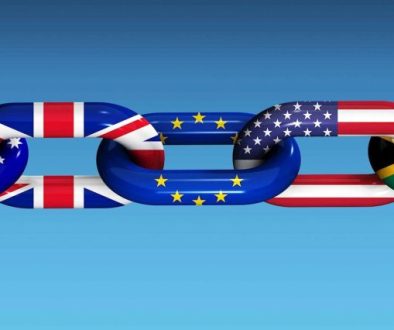As the BREXIT agreement was ratified, harming trade between the UK and the EU as well as between the UK and non-EU countries, a new Union is being discussed and may happen soon.
United we stand
“We are only as strong as we are united, as weak as we are divided.”
Cambodia is a small to mid-sized country with a population of just over 15 million people and is located in the southern portion of the Indo-China peninsula in Southeast Asia. During most of the 20th century Cambodia, was extremely poor and a relatively weak country in regards to its economy and military; in 1998, after three consecutive years of economic contraction, Cambodia had a GDP per capita of just $269, making it one of the poorest countries in the world. Being poor and small, Cambodia had almost a negligible sway on the global stage in regards to trade, politics, military and economics. Accordingly, the country decided to try something different.
In 1961, the Association of South East Asian Nations (ASEAN) was created by Thailand, the Philippines and Malaysia. This was a union essentially created to help accelerate economic growth, social progress and cultural development in the region. In addition, the union agreement helped promote regional peace, while giving smaller nations a larger say on the global stage. In a sense this new ASEAN Union allowed for small and poor countries to gain political and economic independence from regional superpowers. Over the next several decades, other Southeast Asian nations would join, such as Indonesia, Singapore, Brunei, Laos, Myanmar and Vietnam.
CAZNUK is a theoretical cultural, political and economic community comprising Canada, Australia, New Zealand and the United Kingdom
In 1999, Cambodia decided to join this new political union. Since then, the country has seen its economy rise from a level of extreme poverty to that of a developing nation. In parallel, the ASEAN has seen its economic influence grow over and proved to be a unified economic entity which showed a unified political response to several threats and wars. In fact, this Union now has between the 5th and 7th largest amount of economic influence in the world according to the IMF.
CANZUK: When the big boys unite
Building on the Asian example, and if few developing countries could grow together by unifying, major lessons can be learnt by the rest of the world. In particular, developed countries can yield greater benefits when combining economic and political power.
In this regard, and with the challenges facing the UK following its withdrawal from the EU, the CAZNUK demonstrates a suitable refuge for the country. CAZNUK is a theoretical cultural, political and economic community comprising Canada, Australia, New Zealand and the United Kingdom. Therefore the UK might be looking to re-inforce this “coalition” through widening and strengthening the trade agreements between its member states.
In the early eighteen hundreds, New Zealand was a largely unpopulated series of islands with the exception of the Maori natives. Australia had just a few thousand British settlers, 40% of which were prisoners, and Canada was filled with a few hundred thousand British and French loyalists that did not want to live in the United States after the Revolutionary War. However, in later periods of the nineteenth century, these three young nations would begin to go through a massive transformation. Within the following few decades, they would become more populated, wealthy, and would eventually become part of the Commonwealth of countries under the British Empire.
These three nations, at that time, were not viewed as the most valuable possessions of the British Empire. India, for example, had over 200 million people within its borders, and was one of the largest economies in the world while residing under the British rule. These facts led the British to name India “The Jewel of the Crown”. There were also other nations that were in a more valuable geographical location for the British; Egypt along with parts of China and Indonesia were viewed as more valuable colonies of the British Empire due to their proximity to trade routes, trade partners, and strategic militaristic locations.
But over the next 100 years, the British Empire would begin to decline, as virtually every country that was previously under British rule soon declared its own independence and moved away from the enforced British culture. That was except for a few.
Even after declaring independence from Britain, many of these nations kept their British traditions and even made their own political association called the Commonwealth of Nations. Three of these countries that have kept a lot of their old British traditions are Canada, Australia and New Zealand. Even though each one of them has its own unique culture, but when it comes to laws, norms and daily life, the differences are minimal.
BREXIT to CANZUK?
On January 31st, 2020, the United Kingdom officially ratified an agreement to leave the European Union. Before Brexit, on paper, the EU hade the second largest amount of economic influence in the World behind the United States and slightly ahead of China, but the UK was the second largest economy in the European Union behind Germany. So when UK decided to leave, the European Union fell behind China in terms of global economic influence
Recently, there is a new economic Union being proposed by some of the top political leaders in Canada, Australia, New Zealand and the UK. They are proposing a new Union called CANZUK.
What is this Union? And what are the ramifications for it on the global scale?
The idea is to form a union that would increase trade, foreign policy cooperation, military cooperation and mobility of citizens between these nations. Essentially on a global scale, these four countries would try to act more as one bigger nation versus four smaller ones. So the ramifications of this could be massive. Out of these four countries, the UK has the largest economy and the sixth largest economy in the world. Canada is next having the 10th largest economy in the world, Australia is close behind with the 14th largest economy and New Zealand is a distant 51st in terms of size of its economy largely due to its small population.
When taking into account the size of these economies along with general economic and political influence, the new potential Union would likely become the second most powerful Union in the world behind the EU and this would also make it the fourth largest economic engine behind China, US and EU. CANZUK would also have the fifth strongest military force in the world and would control the largest amount of land and resources on the planet.
In light of above, one can imagine that if this Union were to happen, then a new superpower would be witnessed and clinch its place on the global stage. Moreover, one thing that might make this Union act more as one singular cohesive nation compared to other unions like the European Union is that these countries are very similar in terms of their governing regimes, culture, quality of life, health care, wealth and language. In fact, these are four of the most similar nations in the world.
When CANZUK is compared to the European Union, the latter hosts 27 different countries, 24 different official languages and completely different governing regimes, laws and cultures. So the EU on surface has always been more about trade and mobility, yet CANZUK would likely be more than that; for example, a study of how these CANZUK countries voted in the United Nations, the votes almost always were the same compared to countries in the European Union who almost never completely were unified in their votes. That’s one of the reasons why this might be a union that we have never seen before in term of cohesiveness.
Nevertheless, there are a few major things that are worth noting, one of which is that a key reason as to why some politicians in New Zealand, Australia, Canada and the UK want this Union to go forward is to simply get off of China.
China is essentially trying to control almost every economic engine from ports to manufacturing to trade. But China also has a much different government type, laws and culture compared to the CANZUK countries. That is one of the reasons why the former Conservative Party of Canada Leader Andrew sheer became very supportive for the CANZUK deal. He said a few years ago “I very much support a trade deal with those countries. Australia, New Zealand and the UK have a similar basis of law, they have a common democratic system, and they have the same types of legislation and regulations around investment and trade. Those are the types of things we don’t enjoy with China”.
Therefore, in theory, a CANZUK deal could help Canada and the rest of the CANZUK countries get off of the control of Chinese trade and manufacturing, explaining why many politicians in CANZUK countries would likely support this deal. Moreover, this deal would also help get off Middle Eastern and Russian oil, which is also viewed as an advantage for the CANZUK nations. Statistically, there has been overwhelming public support in each one of these countries; the UK polls show 68% in favor of CANZUK, Australia shows 73% support, Canada is at 76% and New Zealand has an 82% support rate.
Why hasn’t the Union happen yet?
Despite all the benefits of having such a union, a major obstacle facing this achievement is that the benefits of this Union might not be as great as they seem. There would definitely be some gains such as CANZUK citizens being able to work or live in any of these countries without needing a permit, there would also be a political and militaristic advantage as well. But one of the core benefits which is trade might be a lot more difficult than CANZUK supporters think.
Geography is another obstacle. A quick look at the world map would show the huge geographic distance between these four countries. For example, the cities of Perth Australia and Toronto Canada are almost exactly on opposite sides of the planet and the same goes for the cities of Southland New Zealand and London England.
This means that trade between these four nations may not pick up that much even if a favorable trade deal were to be in place. But that doesn’t mean that an increase in trade wouldn’t happen at all, simply due to the fact that Canada and Australia are immense in size; even though the distance between Toronto and Perth is an enormous 18,180 KM (or nearly half the circumference of the planet), the distance between the port of Vancouver in Canada and Brisbane in Australia is only about 11,800 KM, which is a fairly reasonable distance for trade route. Add to that, from Canada’s perspective, the country could practically increase trade with Australia while decreasing trade volume with China. This is because on average it takes 22 days for a ship from China to reach the port of Vancouver, yet it takes about twenty seven days for a ship to travel from Australia to the port of Vancouver; a difference of only five days would not mean that much when transporting large bulk resources from country to country accompanied by cost reductions and tariff cuts. Likewise, when taking into account the Eastern provinces of Canada like Nova Scotia, they are only about 4,600 KM away from London England, meaning that a trade deal between Canada and the UK would have a much more benefits than critics think. In fact, the trade routes which would likely be economically unviable for a CANZUK deal would be trade between the UK and either Australia or New Zealand.
The medium of far future would answer the question of whether a CANZUK Union may be established.



